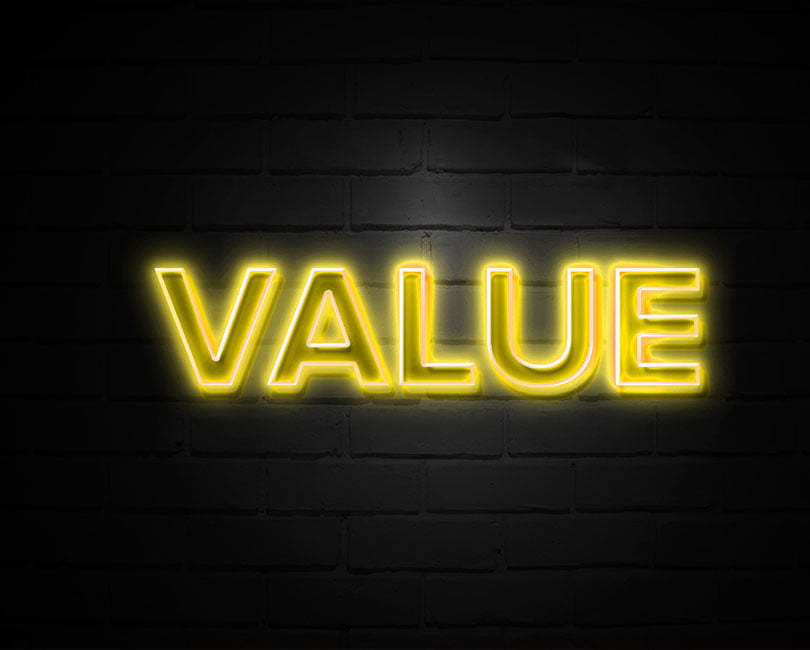Valuations for Architects & Engineers: Step One in Selling a Design Firm

Considering selling a design firm to an outside party? You may be ready to take it to market today and see what kind of interest it garners from strategic buyers in your industry. Or maybe, you’d like to spend a few more years growing it but want to conduct some early research to prepare better. It could also be that selling externally has yet to be a consideration, but now you’ve been approached by a company that sees a world of synergy between your two firms and has put forward a proposal.
Any of the above scenarios call for a professionally prepared AE business valuation. In short, you need to know what you have before determining where you’d like to go.
Don’t Go It Alone
Too often, business owners accept buyers’ offers without conducting their own valuation. After a period of courtship and developing trust, the buyer puts forth their Letter of Intent and may even provide a basic methodology for arriving at the proposed purchase price. Without having anything else to benchmark the offer against, the seller decides to move forward, potentially leaving hundreds of thousands—perhaps millions—of dollars on the table.
Other times, business owners give too much credence to hearsay, allowing rumors of sky-high multiples of earnings to provide them with an over-inflated expectation of value. This scenario comes with its own set of consequences. First, the seller may turn down the strongest offer they’ll ever receive. Second, M&A advisors will be reluctant to take them on as clients, knowing they may never be satisfied. Lastly, the false assumption could implicitly demotivate the firm’s leaders in continuing to grow the business.
Independent valuations make sense from a buyer’s perspective, too. Overpaying for a firm can lead to the combined entity facing financial strain, and making too low of an offer can mean losing out on the opportunity altogether.
Ultimately, the price paid for an acquisition isn’t the zero-sum game it might appear to be on the surface. After a deal is consummated, the seller will most likely continue to work with the buyer through a multi-year transition period. The seller may now also be a shareholder in the larger firm or may receive payments tied to the performance of their old firm (now a subsidiary or division). Thus, both parties have a greater net benefit in a financially sound deal than in one skewed towards either party. An independent valuation is key to negotiating a mutually acceptable deal.
Understanding Valuation Methodology: Income, Market, and Asset-Based Approaches
Fair market value (FMV) is the price at which a willing buyer and willing seller, who are both fully knowledgeable of the facts of the subject business and under no duress, would agree to the transaction. It’s the most common valuation standard for mergers and acquisitions throughout the middle and lower-middle markets. When determining a fair market value, an experienced valuation professional should always utilize multiple valuation methods, as each method has its own inherent limitations.
The Income Approach generally encompasses any valuation method that draws upon the profit generated by a business historically, in the present period, and into the future. The two most common methods within this approach are the Capitalization of Cash Flow Method and the Discounted Cash Flow Method. Both methods work best when the subject company has stable or predictable financial performance. The key component is the risk associated with the investment and how buyers perceive the risk.
The Market Approach most typically centers around the “Comparables” or “Precedent Transactions” Method. Here, the valuator researches recently completed M&A transactions where the acquired business looks similar to the subject business. For a transaction to be comparable, it should fall into the same industry and be of a similar size. For example, the sale of a manufacturing company with $100 million in annual revenue cannot be used to evaluate an architectural practice with $10 million in annual revenue. Additional transaction data, including purchase price, must be available for the comparable to be useful. While just about anyone can use the Comparables Method when selling or shopping for a car, real estate, or even a particular baseball card, only business valuation professionals usually have access to private M&A transaction databases.
The Asset Approach involves assigning values to the business’s tangible and intangible assets. This approach might include appraising fixed assets, like machinery, equipment, computers, or vehicles. It could also determine the worth of intellectual property, like trademarks or patents. Current assets, such as accounts receivable or inventory, are also commonly included. Lastly, if a company has a substantial client list, “book of business,” or contractual backlog, these assets could add significant value under the Asset Approach. The Asset Approach is often given less weight since the income generated by those assets altogether as a business is usually worth more than the assets themselves. The approach is most relevant when valuing a business with low or negative profitability but with significant assets on the balance sheet.
It Gets More Complicated
While determining true profitability, researching comparable transactions, and finding the present market value of a business’s assets are the pillars of valuation, there are countless other factors that can have an outsized impact on the result. These intricacies make it even more critical that an experienced professional prepare the valuation.
For example, having a high percentage of revenue tied to a single client, often referred to as customer concentration, can negatively affect the value and marketability of the business. Most buyers would—and should—see this as a risk, even if the company has been highly profitable. If such vital clients had personal relationships with the old principals, the change in ownership could cause a rift resulting in considerable revenue loss. Moreover, industry disruptions and changing economic headwinds are now seen as amplified threats.
Another valuation factor that is not necessarily apparent in a firm’s income statement or balance sheet is the presence of a “key man.” Many smaller firms rely heavily on a single employee to bring in business, manage important projects, or utilize many years of internalized knowledge. Without this crucial individual, who may or may not be a shareholder, the firm risks taking a hit financially and operationally. Therefore, if there is a chance this person will depart the company due to an M&A transaction or say they plan on retiring soon, a discount on the valuation may need to be applied.
The Value of an AE Valuation
When performed diligently and thoroughly by an experienced valuator, an business valuation for your architecture and/or engineering firm can provide a world of benefit, both in the context of mergers and acquisitions and outside of it. It should give you a clear sense of your firm’s worth and explain exactly how it arrived at that conclusion. It should tell you which internal and external factors are having an impact, as well as how the firm stacks up against others in the industry. Principals should be able to draw upon valuation conclusions as a tool for short-term and long-term business improvement. Regardless of whether the timing is right for an outside sale, there are real benefits to having a prepared valuation.
Next Steps
Join Stambaugh Ness for our upcoming webinar, AE Firm Valuations: M&A’s Crucial Opening Act, to learn more about AE industry-specific valuations, their drivers, and their role in successful transition strategies.




